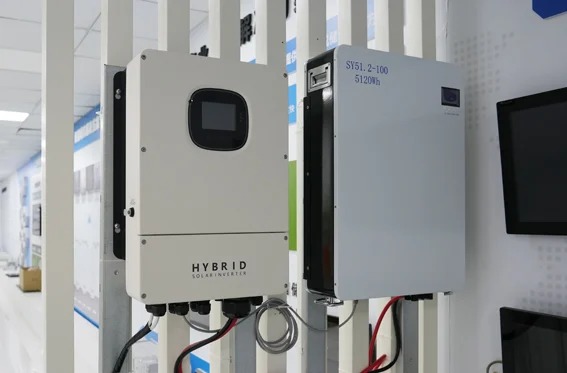Hybrid inverters are an innovative result in the field of solar technologies, offering a combined solution to those who desire to build a solar power system with battery storage. It combines in one device the functions of a conventional inverter-which changes the direct current generated by the solar panels into alternating current-and those of a battery inverter, which takes care of battery charging and discharging.
Advantages and disadvantages of hybrid solar inverters
The hybrid inverter has a huge advantage in that when the solar is not enough to drive the load, excess power can be taken from the grid. In addition, in case of failure of the power grid, the battery can provide backup. Its appearance makes it possible to use a variety of energy sources. They no longer rely on one source of energy, whether for families or businesses, and are very friendly in situations where electricity is inconvenient or there are frequent power outages.
Cons: Hybrid inverters are generally more expensive than standard grid-connected inverters because battery integration requires additional components. Hybrid systems are more complex than conventional solar installations and require proper sizing, integration, and maintenance of the cells. However, today’s hybrid inverters have adopted a centralized modular, intelligent, visual installation and processing, which is very convenient for most users.
Key characteristics of hybrid inverters
Diversity: It can process electricity from solar arrays, the grid, and even battery storage. That means the consumers can use the energy more flexibly.
Intelligent management: The hybrid inverter possesses intelligent software that can automatically change working modes according to real-time situations-such as charging from the grid when the price is low, and using that stored energy when the price rises during peak hours.
Simplified system design reduces the need for additional components and hence simplifies the installation process. This leads to an enhancement in the overall system efficiency.
Enhanced user experience through easy-to-operate interface, supported by remote monitoring applications, allows users without a technical background to effectively operate and optimize their energy usage.
Main function
- Grid Feed: The function allows the return of excess power to the grid in exchange, probably, for a discount in one’s bill or any other form of compensation.
- Battery Charge: Extra energy coming from photovoltaics, or from the grid at required times, charges the battery to maintain constant power supply.
- Direct load consumption: When the battery is full and the solar energy is continuously generated, the power can be directly supplied to the home for use, reducing the dependence on the external grid.
- Power limit protection: with a safety mechanism to prevent overload, ensuring the safe operation of the power grid and other equipment.
Summary of advantages
– More flexible and reliable, especially during periods without sunlight.
It is equipped with a simple structure, cost, and complexity-reduced system. Support for up to multiple battery types is allowed by the device to meet different energy storage needs. It is designed with advanced MPPT technology to ensure highly efficient energy conversion and battery charging. Remote monitoring via a mobile app enables users to understand and optimize their usage habits more intuitively.
The good thing with hybrid inverters is that the use of a battery is not obligatory, though its usage does bring out the maximum benefits of hybrid inverter systems in ensuring that power supply is maintained in the case of an outage. Equally, hybrid inverters normally come with a very long service life, complete with excellent warranty service for protection of investment by the user. As this technology is consequently developed and enhanced, hybrid inverters have become increasingly popular for homes and businesses seeking more environmentally friendly and cost-effective energy solutions.

